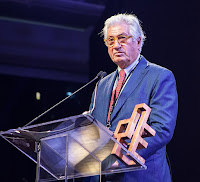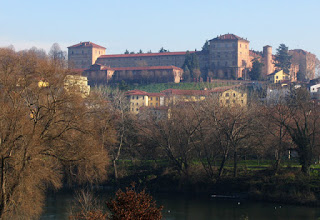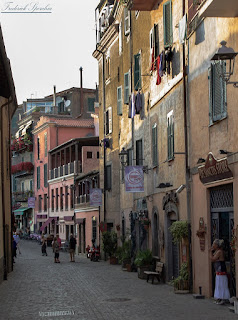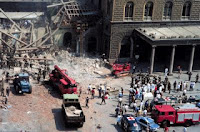 |
| The Volkswagen Golf Mk I was one of Giugiaro's most successful designs, the car selling 6.8 million units |
Creative genius behind many of the world’s most popular cars
Giorgetto Giugiaro, who has been described as the most influential automotive designer of the 20th century, was born on this day in 1938 in Garessio, a village in Piedmont about 100km (62 miles) south of Turin.
In a career spanning more than half a century, Giugiaro and his companies have designed around 200 different cars, from the high-end luxury of Aston Martin, Ferrari, Maserati and DeLorean to the mass production models of Fiat, Volkswagen, Hyundai, Daewoo and SEAT.
The Volkswagen Golf and the Fiat Panda, two of the most successful popular cars of all time, were Giugiaro’s concepts.
 |
| Giugiaro formed his own company. Italdesign, just outside Turin in 1968 |
He took an interest in styling automobiles only after one of his professors suggested that the motor industry would pay big money for someone of his artistic vision who could come up with elegant and practical designs.
Not surprisingly, after he had presented some sketches of cars at a student exhibition in Turin in 1955, it was Fiat - based in Turin - who became aware of his talent. The company’s technical director, Dante Giacosa, approached Giugiaro and three months later he joined Fiat’s Special Vehicle Design Study Department. He would stay with Fiat for four years, although he struggled to win approval for his designs.
From Fiat, he moved up the ladder of automotive design very quickly, lured away by Nuccio Bertone to join Gruppo Bertone, where Giugiaro delivered an amazing run of successful designs.
 |
| The stylish Alfa Romeo Brera is based on another of Giugiaro's designs for Italdesign |
Giugiaro moved to Ghia in 1965, shortly before it was taken over by Alejandro de Tomaso, head of De Tomaso. He stayed there only two years, but it was long enough for him to make his mark with the De Tomaso Mangusta and the Maserati Ghibli, both unveiled in 1966.
Only a year later, Giugiaro moved on again, this time to form a partnership with Aldo Mantovani and a new company, based in Moncalieri, just outside Turin, which would be called Italdesign (later Italdesign Giugiaro.)
Since its founding, Giugiaro’s company has styled an estimated 200 vehicles for clients all over the world.
 |
| The Fiat Panda is another massive seller worldwide that began life as a Giorgetto Giugiaro design |
Probably the most successful of all has been the Volkswagen Golf Mark I, which was unveiled for the first time in 1974 and went on to sell 6.8 million units.
Giugiaro’s favoured styles in the early days of Italdesign tended to accentuate curves, as characterised by the DeTomaso Mangusta and the Maserati Ghibli. Later he became more concerned with straight lines, as characterised by the VW designs for the Passat and Scirocco as well as the Golf. Other designers often followed suit. A high-sided taxi he conceived for the Museum of Modern Art in New York in 1978 did not enter production but became the influence for a generation of MPVs.
Like the Golf, Giugiaro’s Fiat Panda sold in huge numbers. Conceived to be minimalist, aesthetic and functional, the model continued in production for 32 years with barely an upgrade in that period.
His design talents have not stopped at cars. Giugiaro has also designed cameras for Nikon, firearms for Beretta, and motorcycles for Ducati, and Suzuki.
 |
| The castle at Moncalieri, once a royal residence for the Savoys, now houses a Carabinieri training college |
Moncalieri, where Giugiaro established the Italdesign company with his partner Aldo Mantovani, has a population of almost 58,000 people. About 8km (5 miles) south of Turin within the city’s metropolitan area, it is notable for its castle, built in the 12th century and enlarged in the 15th century, which became a favourite residence of King Victor Emmanuel II and subsequently his daughter, Maria Clotilde. The castle now houses a prestigious training college for the Carabinieri, Italy’s quasi-military police force.
 |
| The village of Garessio sits in a valley in the Ligurian Alps, close to the Langhe wine region |
Garessio, where Giugiaro was born, is located in the Ligurian Alps, on the border between Liguria and Piemonte provinces. In medieval times it was an important staging post for the salt trade and eventually salt brought over the Ligurian Alps from the Mediterrean Sea was re-packed and sold in Garessio for distribution to Northern Europe. It is close to the Langhe wine region, which produces famous wines such as Barolo and Dolcetto, and is famous for the Aqua San Bernardo mineral water, which is renowned to have healing properties. At the turn of the century, Garessio built its fame as a spa town. It has a well preserved historical town centre.
More reading:
Why Giuseppe 'Nuccio' Bertone is known as the 'godfather of Italian car design'
Dante Giacosa, the engineer behind the iconic Fiat Cinquecento
How 'Pinin' Farina became a giant of the car industry
Also on this day:
1616: The death of architect Vincenzo Scamozzi
1893: The death of opera composer Alfredo Catalani
1956: The birth of TV presenter Gerry Scotti
Home




















